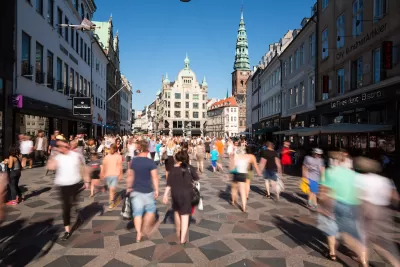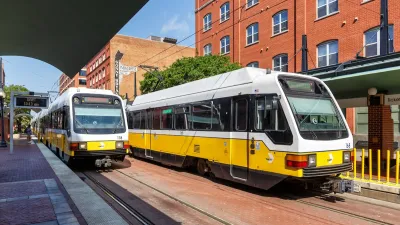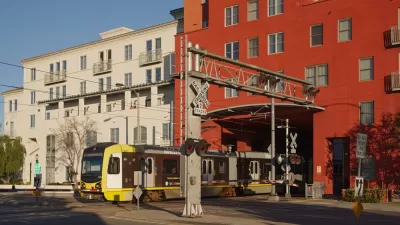The vibrancy of a neighborhood may be defined by what people can see in their immediate vicinity.

An article by Tristan Cleveland in Happy Cities describes how visual cues in the immediate field of vision can make a significant impact on the vibrancy of urban streets.
Cleveland describes a study by researcher Todor Stojanovski, who noticed that places like Copenhagen’s Ørestad Station, an ostensibly transit-oriented development, still lack street life despite access to transit and urban amenities within a 400-meter radius. Stojanovich’s analysis found that “The majority of streetlife happens within 100 metres of stations.”
For Stojanovich, this is explained by the fact that a human can generally see clearly for roughly 100 meters. Thus, “What matters most for supporting commercial space isn’t what people can theoretically walk to, but what they can see.” Urbanist Jan Gehl has discussed a similar theory, calling the concept the “social field of view.” For Gehl and Stojanovich, “This is the scale that matters most for creating successful streets.”
Cleveland notes, “Four hundred metres remains the right scale for some things: People will find their way to their homes and office jobs without needing to see them from the transit station. But to create vibrant streets and public spaces, and to support street-level businesses, designers have to focus on the human eye.”
FULL STORY: The secret to vibrant streets? Focus on what people can see

Montreal Mall to Become 6,000 Housing Units
Place Versailles will be transformed into a mixed-use complex over the next 25 years.

Planetizen Federal Action Tracker
A weekly monitor of how Trump’s orders and actions are impacting planners and planning in America.

DARTSpace Platform Streamlines Dallas TOD Application Process
The Dallas transit agency hopes a shorter permitting timeline will boost transit-oriented development around rail stations.

Study: 4% of Truckers Lack a Valid Commercial License
Over 56% of inspected trucks had other violations.

Chicago Judge Orders Thousands of Accessible Ped Signals
Only 3% of the city's crossing signals are currently accessible to blind pedestrians.

Philadelphia Swaps Car Lanes for Bikeways in Unanimous Vote
The project will transform one of the handful of streets responsible for 80% of the city’s major crashes.
Urban Design for Planners 1: Software Tools
This six-course series explores essential urban design concepts using open source software and equips planners with the tools they need to participate fully in the urban design process.
Planning for Universal Design
Learn the tools for implementing Universal Design in planning regulations.
City of Mt Shasta
City of Camden Redevelopment Agency
City of Astoria
Transportation Research & Education Center (TREC) at Portland State University
US High Speed Rail Association
City of Camden Redevelopment Agency
Municipality of Princeton (NJ)





























